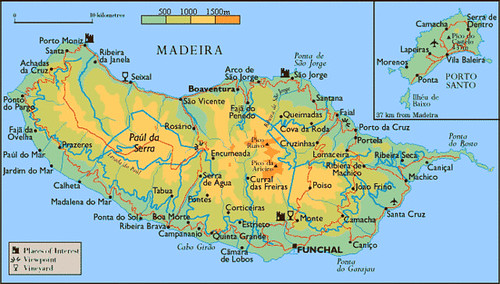 |
| Madeira and Porto Santo, from here |
So… About Madeira’s history we can say that the Portuguese have put this archipelago on the map, but no one doubts that these islands were already there… The same happens with the history of Madeira Embroidery. Many claim that its history begins in 1850 with Elisabeth Phelps, but that is not true… She just put Madeira Embroidery on the map… But it was already there...
Today I’ll talk about what inspired the first embroiderers, those living before 1850 and next week we’ll see what changed after that…
 |
| Linen Madeira Embroidery, photo from an antiques blog. |
Most of the women that first arrived came from the North of Portugal, and many specifically from Viana do Castelo region, bringing with them the ancient tradition of embroidery and great skills. This art soon spread to almost all women of the island, even to those living in remote rural areas of the interior.
Women embroidered for own enjoyment or as gifts for their relatives and friends. For the young woman, the tradition of the wedding trousseau was very often the reason for such patient dedication to needlework. Embroidery pieces were passed from generation to generation not only for their great sentimental value but also for the richness of the embroidery.
 |
| Organdy Madeira Embroidery, photo from an antiques blog. |
Nature lends its movements to embroidery, giving the embroidered items their uniquely respectable, refined romantic characteristics. In particular, the gracefully flowing movement, the composition of natural motifs where the abstract and imaginary flowers, as well as geometrical figures, provide graciousness and refinement in the embroidered items. (1)
The Madeira needlewoman became an expert in all types of needlework, from Cut Work to colored embroideries and tapestries in Tent Stitch. (2)
 |
| Ceramic Tile representing Madeira emboiderers, poto from this blog. |




No comments:
Post a Comment